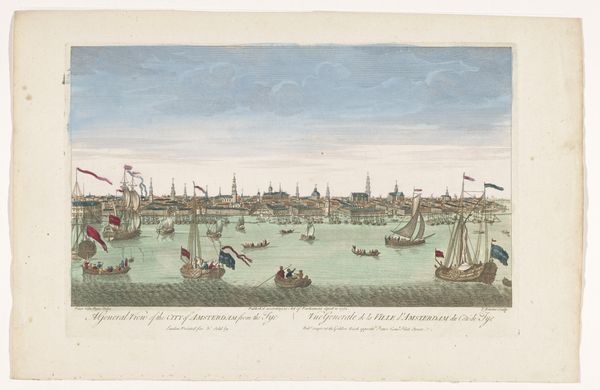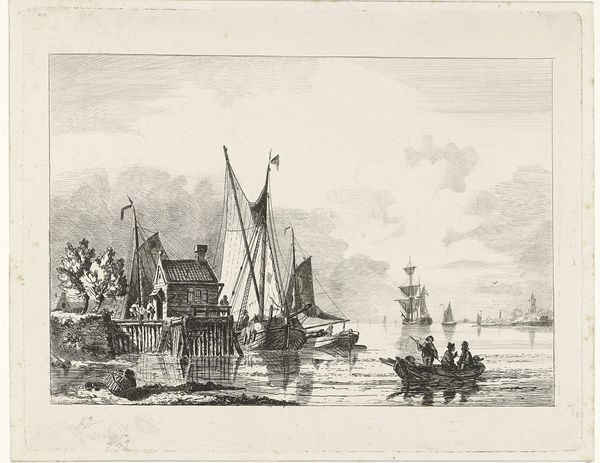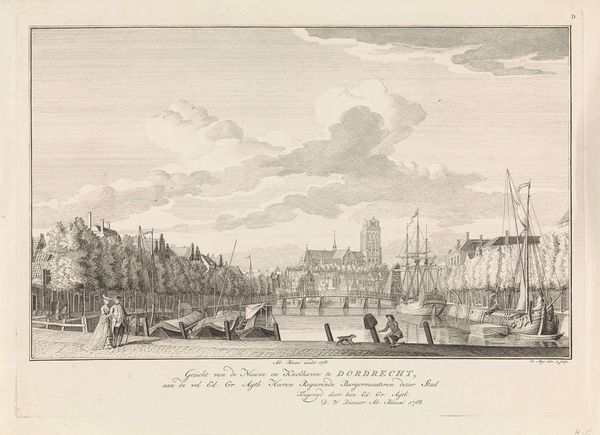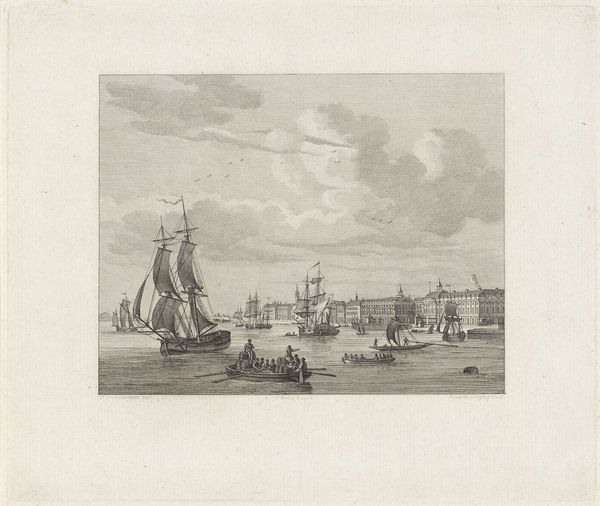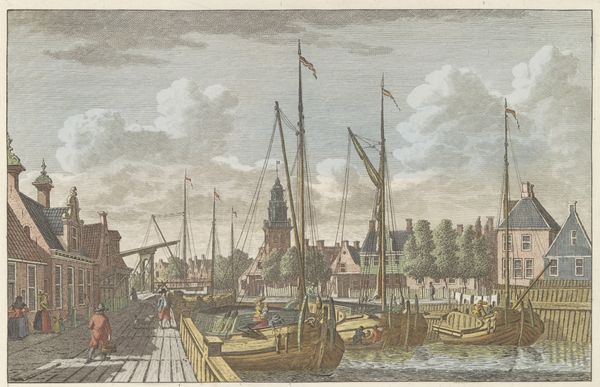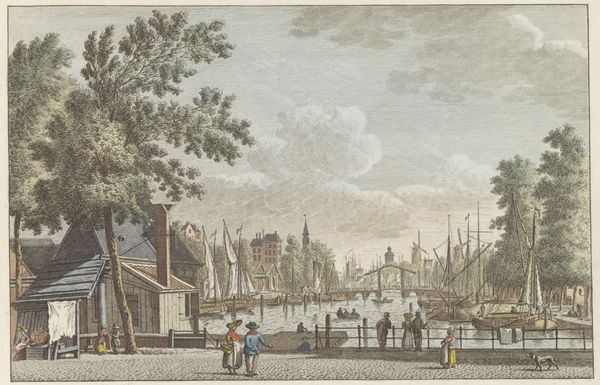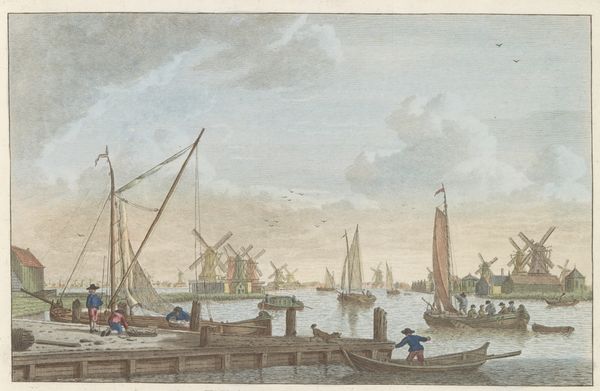
drawing, plein-air, watercolor
#
drawing
#
neoclacissism
#
plein-air
#
landscape
#
watercolor
#
coloured pencil
#
cityscape
Dimensions: height 132 mm, width 622 mm
Copyright: Rijks Museum: Open Domain
Editor: This watercolor and colored pencil panorama, "Panorama van Amsterdam (blad D)", attributed to Pieter van der Meulen and dated between 1792 and 1847, is quite striking! The linear composition and muted colors create a very tranquil feeling. What aspects of this piece capture your attention? Curator: The immediate draw for me is the process. Look closely at the meticulous application of watercolor and pencil – likely executed en plein air, indicating a direct relationship to the materials found in Amsterdam itself: the water, the wood pilings, even the pigments may reflect the local industry of the time. It pushes against the high/low art division by using the city as material, as the source of its aesthetic. Editor: That’s a fascinating way to put it. So, you see the city as integral to the making of the artwork itself. Curator: Exactly. Think about the wooden pilings depicted – how were these sourced, crafted, and driven into the ground? The materials, labor, and consumption within Amsterdam at the time become crucial elements, telling a silent story of its material culture. How might the viewer's social class, perhaps viewing it framed within their domestic space, mediate their connection to those unseen labours? Editor: So it’s less about the aesthetic beauty, and more about the production and context behind the image itself? Curator: The aesthetics aren't separate. Consider how the limitations and availability of the materials at Van der Meulen's disposal impacted the composition and form. The watercolor would capture something unique due to its portability for instance, rather than using oils in the studio. The method becomes just as relevant, if not more so, than the subject it is conveying. Editor: I see what you mean. So, instead of focusing on Amsterdam's beauty, you examine the city's infrastructure through its art materials? That's a really interesting take. Curator: Precisely. Examining those overlooked labor-intensive features can open up entirely new avenues of interpretation. I suppose I’ll always look at cityscapes in terms of labor and industrial practice from now on.
Comments
No comments
Be the first to comment and join the conversation on the ultimate creative platform.


